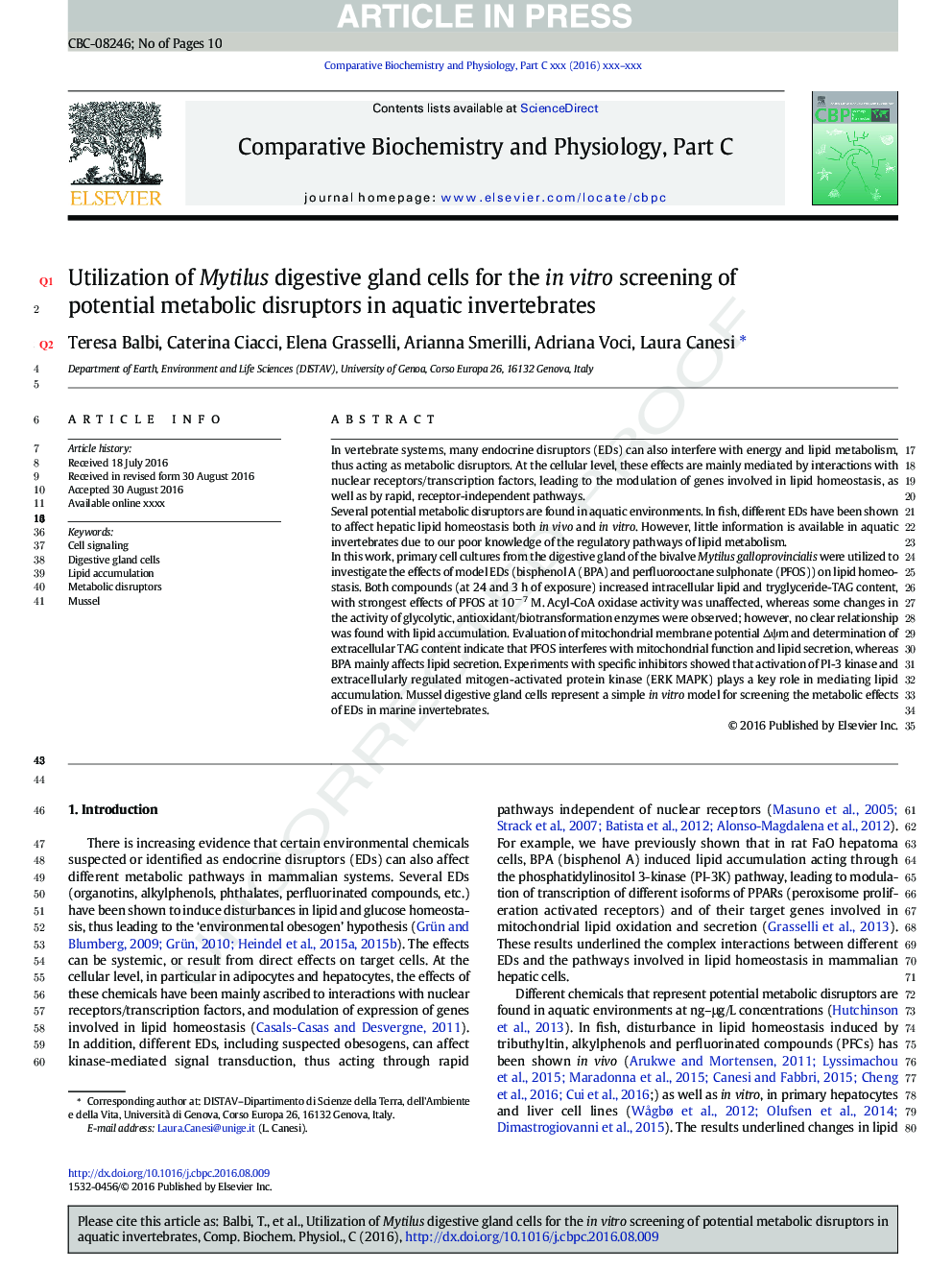| Article ID | Journal | Published Year | Pages | File Type |
|---|---|---|---|---|
| 5510639 | Comparative Biochemistry and Physiology Part C: Toxicology & Pharmacology | 2017 | 10 Pages |
Abstract
In this work, primary cell cultures from the digestive gland of the bivalve Mytilus galloprovincialis were utilized to investigate the effects of model EDs (bisphenol A (BPA) and perfluorooctane sulphonate (PFOS)) on lipid homeostasis. Both compounds (at 24 and 3 h of exposure) increased intracellular lipid and tryglyceride-TAG content, with strongest effects of PFOS at 10â 7 M. Acyl-CoA oxidase activity was unaffected, whereas some changes in the activity of glycolytic, antioxidant/biotransformation enzymes were observed; however, no clear relationship was found with lipid accumulation. Evaluation of mitochondrial membrane potential ÎÏm and determination of extracellular TAG content indicate that PFOS interferes with mitochondrial function and lipid secretion, whereas BPA mainly affects lipid secretion. Experiments with specific inhibitors showed that activation of PI-3 kinase and extracellularly regulated mitogen-activated protein kinase (ERK MAPK) plays a key role in mediating lipid accumulation. Mussel digestive gland cells represent a simple in vitro model for screening the metabolic effects of EDs in marine invertebrates.
Related Topics
Life Sciences
Biochemistry, Genetics and Molecular Biology
Biochemistry
Authors
Teresa Balbi, Caterina Ciacci, Elena Grasselli, Arianna Smerilli, Adriana Voci, Laura Canesi,
